Physical Therapy Practice Management
Sterling has always played its role on a very large scale. To date, the company has delivered management seminars to over 175,000 professionals and their staff. Sterling has also delivered over a half-million consulting hours and 70,000 management and training courses. When it comes to physical therapy practice management, Sterling has helped countless professionals on their way to success.
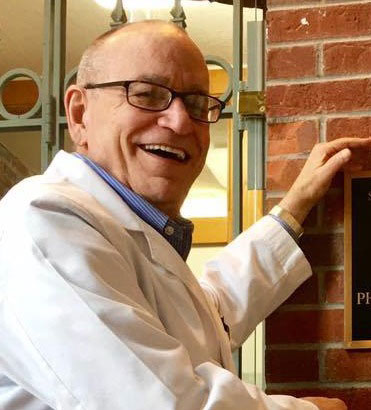
Paul Hughes
Like many therapists, when I graduated I went into hospital practice. I became administrator of my hospital’s Department of Physical Medicine and Rehabilitation. I created the department and then decided to go into private practice. I did fairly well, created and then dissolved a corporation that provided therapists for a tri-state region. I went off for several years and studied orthopedics in England and Norway, then came back to the U.S. As I became more proficient as a clinician, the practice would grow but it would hit a certain level, and I could never get over that level.
So when I had the idea that I wanted to build a really large clinic for orthopedic practice, I honestly looked over my history. I came to the inescapable conclusion that I should have some administrative training.
I looked at getting an MBA, then this and that, and I looked into consulting firms. In fact, I looked for two full years. I listed out about ten criteria that a source for the technology I needed would have to meet. And I would compare the various possibilities with those criteria. And the more people I talked to, the group that I got constantly referred to, which got the highest recommendations, was Sterling. So I met with them, and in my conversations they demonstrated they could meet the ten criteria I had laid out. And I signed up, went to Glendale, and learned the management technology I needed.
I took a 3,500 square foot building, and expanded it into a 15,000 square foot facility, with triple the staff and triple the production. When I started on that expansion, I expected that with nine months of construction and all the changes, we would have downtrends. But by applying what I learned from Sterling, we just kept the production going up.
In fact, for every year I have been with Sterling, I have had rising statistics in every important measure of production. All those stops and barriers I had for 20 years are just no longer there. I am able to handle the day-to-day stuff and set the long-term goals as well.
I was correct years ago, when I thought it wasn’t my clinical expertise keeping me down, but my shortcomings in the area of administrative skill, and all the practical of running a business!
In physical therapy, we’re dealing with a host of parties, third party payers, with litigation, and with the family, as well as the patients themselves. There are many participants who are involved with the care of a single patient, and multiple disciplines. I think one of the things that has to be a spinoff of that is an ethical viewpoint. With Sterling, those ethical concepts are contained within the technology, and permeate the practice.
The result is that a lot of the stress which is normally in a practice just isn’t there anymore.
To elaborate a little, the policies, even the bonus system we use, is based on high ethical standards, by which I mean real contemplation of optimum survival for the individual and for the group as a whole, and doing what is right based on that. From our viewpoint, this has been a keystone. Our system of financial management is also part of this. It is well understood by the staff and comes across to third parties. It has helped us build our reputation as one of the most ethical in the state of Illinois.
There’s another way that Sterling is especially compatible with physical therapy as a discipline. That is the whole consideration that I start with, that what we are doing deals with function. We’re there to improve human performance and function; that’s in the definition of what we do. In some other sorts of medicine they are always looking at structure, whereas we are into improving function, to measure it and to fit it into the scope of things. Our job is to improve the overall function of the biological unit.
Now you have Sterling, and conceptually it is very easy for my staff to see that this is very functional too. Physical therapy is one of the professions which most easily aligns with the Hubbard management technology, because they’re both identifying and dealing with dysfunction.
Sterling does an absolutely super job.
Paul Hughes, PT, Illinois
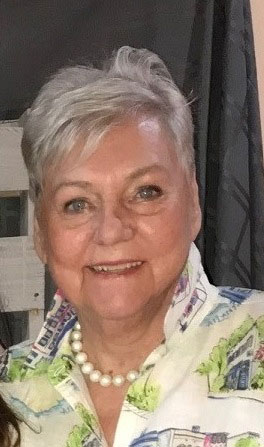
Gudrun Morgan
In 1990, I was having staff problems, organization problems and I knew that I had to find a solution if I was to stay in business. Someone called me from Sterling and told me about the management technology they delivered. It sounded good, so I asked them if they could give me the name of a client of theirs in the area so I could call them. Not only was I given two names, but both of them happened to be friends of mine! I had no idea they were using Sterling. I figured that if it was good enough for them, it was good enough for me, so I signed up.
I remember at the first Sterling introductory seminar I attended, they gave a demonstration concerning the reception area and the overload that can occur there, and it made a lot of sense. I knew immediately that what Sterling was offering was more than motivational talk—they were offering genuine management expertise.
Also, seeing how well-run the Sterling operation was really impressed me. I was amazed that an organization with the amount of staff that they had could run so quietly and efficiently. I had never experienced that before. Of course, I was also impressed with the personal interest that they showed in me and the way that everyone was helping me find the answers that I needed.
In learning how to organize, I realized how disorganized my office was. I also realized the steps that I could take to correct that. What they were teaching me made a lot of sense and I could see how I could immediately apply it to make my office run more smoothly and efficiently.
I had taken a six-week management training course earlier at a local university in my quest for a solution to my office problems. On the university course we had someone who lectured us. We were handed booklets to study and that was it. Sterling approached the problem in an entirely different manner. It was more of an individual approach than a group approach. The Sterling staff worked really hard, not only to make sure that I understood the material I was studying, but to make sure that I could apply it in my office when I went home.
When I returned from Sterling I started implementing the management technology on a step-by-step basis. The staff took to it very well and I saw immediate results. Based on this, I decided to bring out a Sterling staff member to help train my staff so that the management technology could be implemented faster.
The first place where I noticed a real difference was in the lessening of the amount of confusion in the office when policy became known and agreed upon by all staff. As the confusion decreased, everyone’s effectiveness improved. As a result, income went up 25% within the first two months. And before this there was a lot more stress on everyone, especially me!
Another thing I noticed as the management technology was implemented was that I was more and more in control of the office and the staff. I became more adept at spotting a trouble spot when it first occurred and handling it while it was still small. In other words, I didn’t wait for trouble to come looking for me, I went looking for it. I learned that almost any problem can be handled with good communication and confront.
The emotional tone scale has been a particularly valuable tool. It allows a person to spot where a patient or employee is emotionally and how to best communicate to that person effectively. The staff have had lots of wins using the tone scale and are amazed at how effective it is in predicting how precisely a person will respond and what they will appreciate.
I don’t think I would be in business today if I had not found Sterling. Through training in the management technology, I now run my business instead of it running me. And, thanks to Sterling, I run it very successfully!
Gudrun Morgan, PT, Texas
Jim Hewson
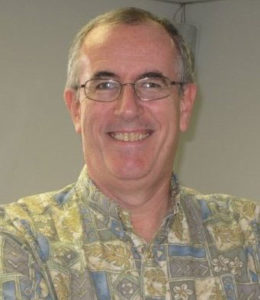 In 1989, I had been in private practice for five years, and I had grown, but felt there was more to my being able to master the business side of running a private office. I was just feeling overwhelmed by the paperwork. I was a small business that needed to be organized, flying by the seat of my pants.
In 1989, I had been in private practice for five years, and I had grown, but felt there was more to my being able to master the business side of running a private office. I was just feeling overwhelmed by the paperwork. I was a small business that needed to be organized, flying by the seat of my pants.
To illustrate the state of things, I had gotten very behind in billing for services—there was a backlog for bills that hadn’t even been mailed out! It was only because I had a contract at another facility that I was allowed to get along as a little business. I was habitually procrastinating—I didn’t have a system in place that helped me be on target.
One day, however, I realized that without some training in management, without a consultant, I might be in the same place a year from then if I didn’t do something.
I attended a Sterling seminar. I liked the idea that statistically measuring what went on in the practice would help to guide it. It was a management principle I could immediately see was sound. I also liked the idea of having certain formulas that would assist in guiding the practice. I also wanted more of the information they introduced on understanding human behavior—mine and that of the staff.
I spoke with a consultant afterwards, and arranged to go to Glendale for the full Sterling program.
On arriving at Sterling’s California facility, I felt I was in a very sophisticated, well-managed organization. I knew they were very successful in their growth and in doing things for people. I like the fact that I got a lot of individualized attention, and liked the way a lot of the training was self-paced.
As to the coursework, there was a real logic, a real soundness to the method of collecting data about your company. The condition formulas—steps to take based on the state of things in the practice—made a lot of sense. I found out when I applied these methods that they were just as good as they seemed.
I would say I doubled the amount of business we were able to do in two years.
Jim Hewson, PT, Hawaii
Larry Fullmer
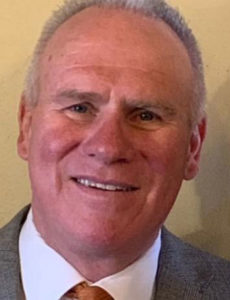 In 1998, I became the sole owner of a physical therapy clinic where I had been a partner. At the time, the clinic had four locations with 25 to 30 staff. The financial incentives of having my own practice appealed to me, along with being my own boss. But once I was in charge of all the staff and the offices, I became overwhelmed. I wondered how I could do it and still practice physical therapy.
In 1998, I became the sole owner of a physical therapy clinic where I had been a partner. At the time, the clinic had four locations with 25 to 30 staff. The financial incentives of having my own practice appealed to me, along with being my own boss. But once I was in charge of all the staff and the offices, I became overwhelmed. I wondered how I could do it and still practice physical therapy.
My biggest problem was human resources. I was uncomfortable with this area and had no one to talk to about it. I knew the patient care was fine because I controlled that, but I didn’t pay attention to the front desk or behind the scenes. I worried about things falling through the cracks. Was the receptionist calling patients who’d missed their appointments? Was anyone tracking the insurance claims? How far out were the accounts receivables? I know we were inefficient but I couldn’t keep my finger on the pulse. I needed to learn how to manage and grow the clinic which is why I became a Sterling client.
I studied Sterling’s program and then asked them to come out and institute it. They organized the office, trained the staff and assigned each one a statistic that measured the work they actually did. The receptionist, for example, began to track the percentage of appointments kept every week. Sterling then taught me how to use cash incentives based on job performance to motivate the staff. I made the office directors feel like owners and gave them a percentage of the profits from their offices—golden handcuffs based on what they actually brought in. I gave the administrative staff a percentage too. Everyone was accountable and a healthy rivalry between offices developed. We had never had that kind of relationship before.
Sterling helped me build the practice in many other ways. For instance, they made me come out of my marketing comfort zone with their Care to Share referral program which is now our number one referral source. And they helped me make the right hiring picks with their personnel testing.
When I started Sterling’s program, the clinic was producing $1 million per year. Within a short time it was making $7 million which enabled me to semi-retire at 58 years old. Now my wife and I are able to travel to places like Africa and New Zealand and do other things we weren’t able to do before.
Larry Fullmer, PT, Utah
Flo Woolfolk
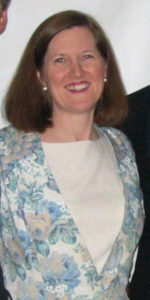 I went into it (starting a practice) with the attitude that I’d make no money personally for three years, but after that I’d be able to pay myself something.
I went into it (starting a practice) with the attitude that I’d make no money personally for three years, but after that I’d be able to pay myself something.
By the fourth year things had not sorted themselves out. I was past the period where I was supposed to make things happen. But I still wasn’t doing as well as I wanted. I really didn’t feel like I had control. I didn’t feel that all the advice I was given was working.
And I was unhappy. My practice was just a lot of hard work and personally I felt like I was a drain on my husband and our personal income. I felt so dumb. I didn’t know why my business wasn’t doing better than it was! I knew I needed professional management help, so I watched the Sterling video.
I could see the program was what I needed but it still took some courage. I was scared to death of doing the program. But I did it; I went to Glendale and did the Sterling Program, and after that things changed for sure.
Using the data in the Management by Statistics course, my staff were made accountable for their production, which made life so much easier. I could see where the problems were, I could tell who needed help and who didn’t. It focused me as a supervisor.
And it made things even better with the staff. Each person is working more efficiently now, using the administrative tools we learned at Sterling. And now we all share in the excitement of “highest-ever” statistics.
Income of the practice also increased tremendously. In fact, it’s more than doubled. The Financial Planning course enabled me to institute real financial planning, so we run a very lean business—money doesn’t just disappear like it used to. So, while the staff does better, I can and do pay myself a six-figure income annually.
My consultant at Sterling really understands the office of a health care professional. She knows we all tend to operate on a lot of false data, like “I can’t pay myself,” and “Collections always drop at Christmas time.” She guided me through to the light on the other side of all those false ideas.
It changed my personal life, too. Paying myself more money enabled me to say to my hubby, “Quit your job, it’s making you sick.” He came with me the first time I went to Sterling, so he came in as my officer manager and never left. It’s been great; we even have the ability to take time off if we want to.
Before Sterling, I never had the control and knowledge that I could keep the business successful and growing. Now if production drops, I know I can just fix it. My goal always was to have a business where people would enjoy coming to work, and that happens now.
Flo Woolfolk, PT, Virginia
READ MORE SUCCESSES
Don Showalter from Jonesboro, Georgia already had almost a decade of work as a physical therapist behind him when in late 1988, he decided he needed some management skills. “Like…

